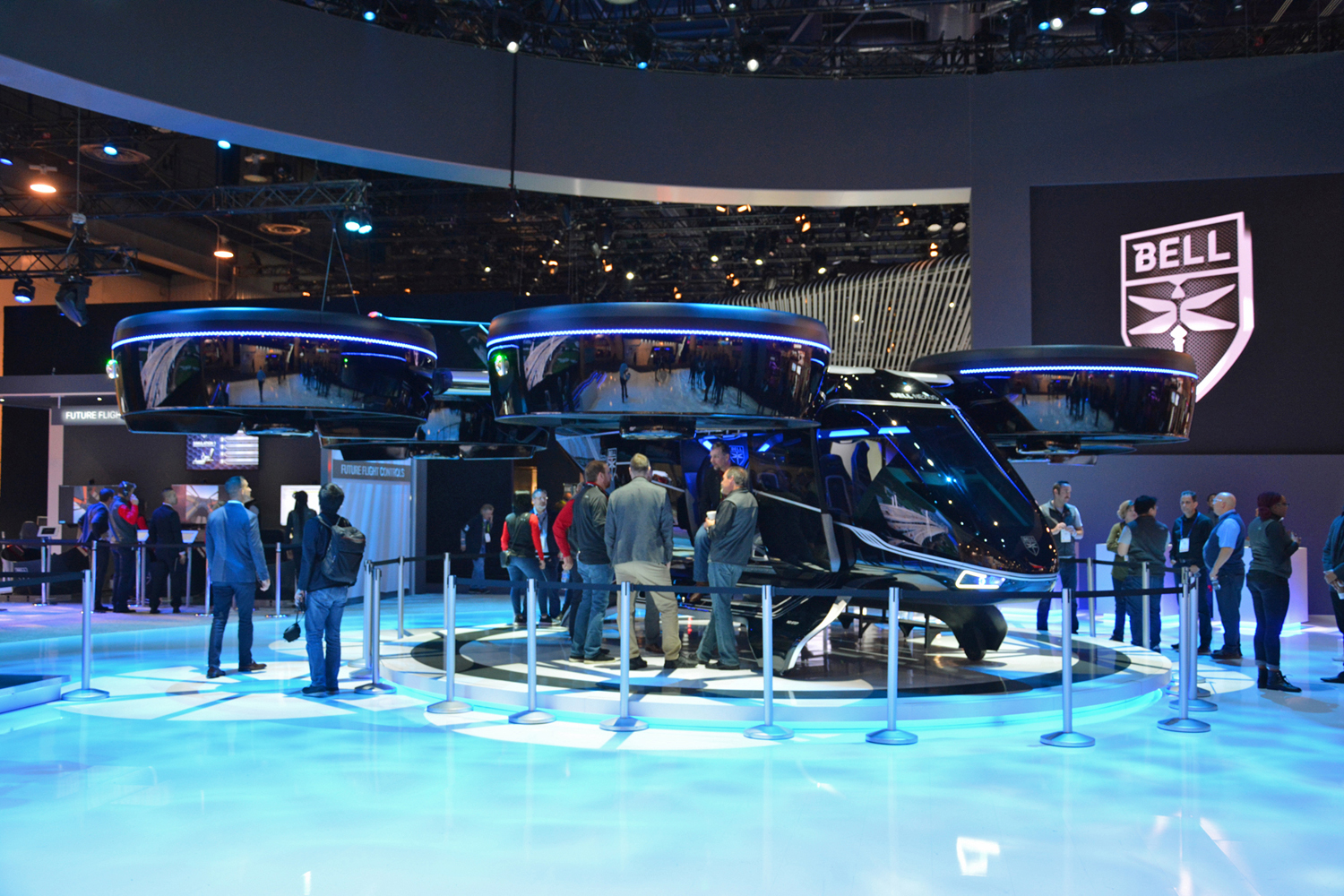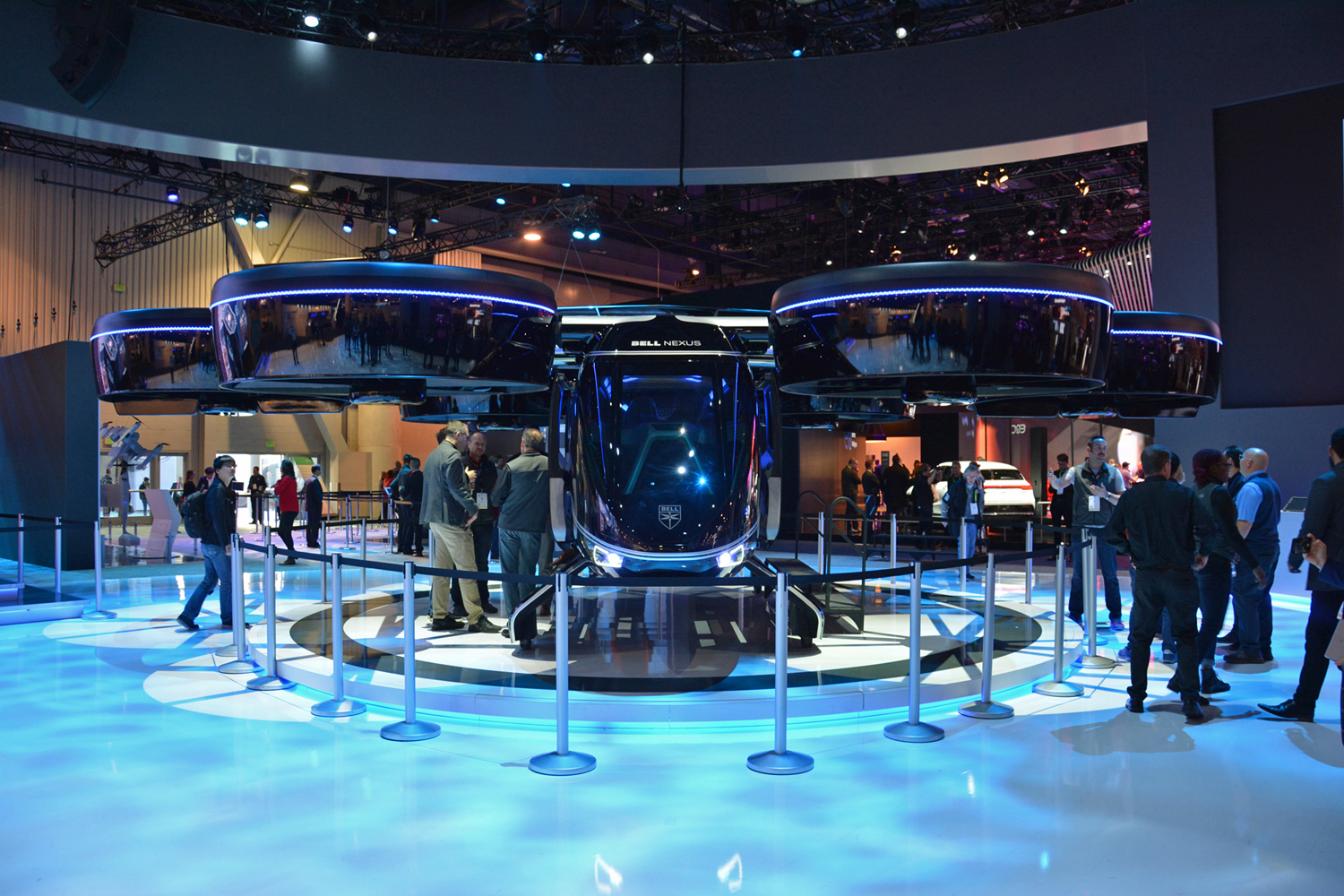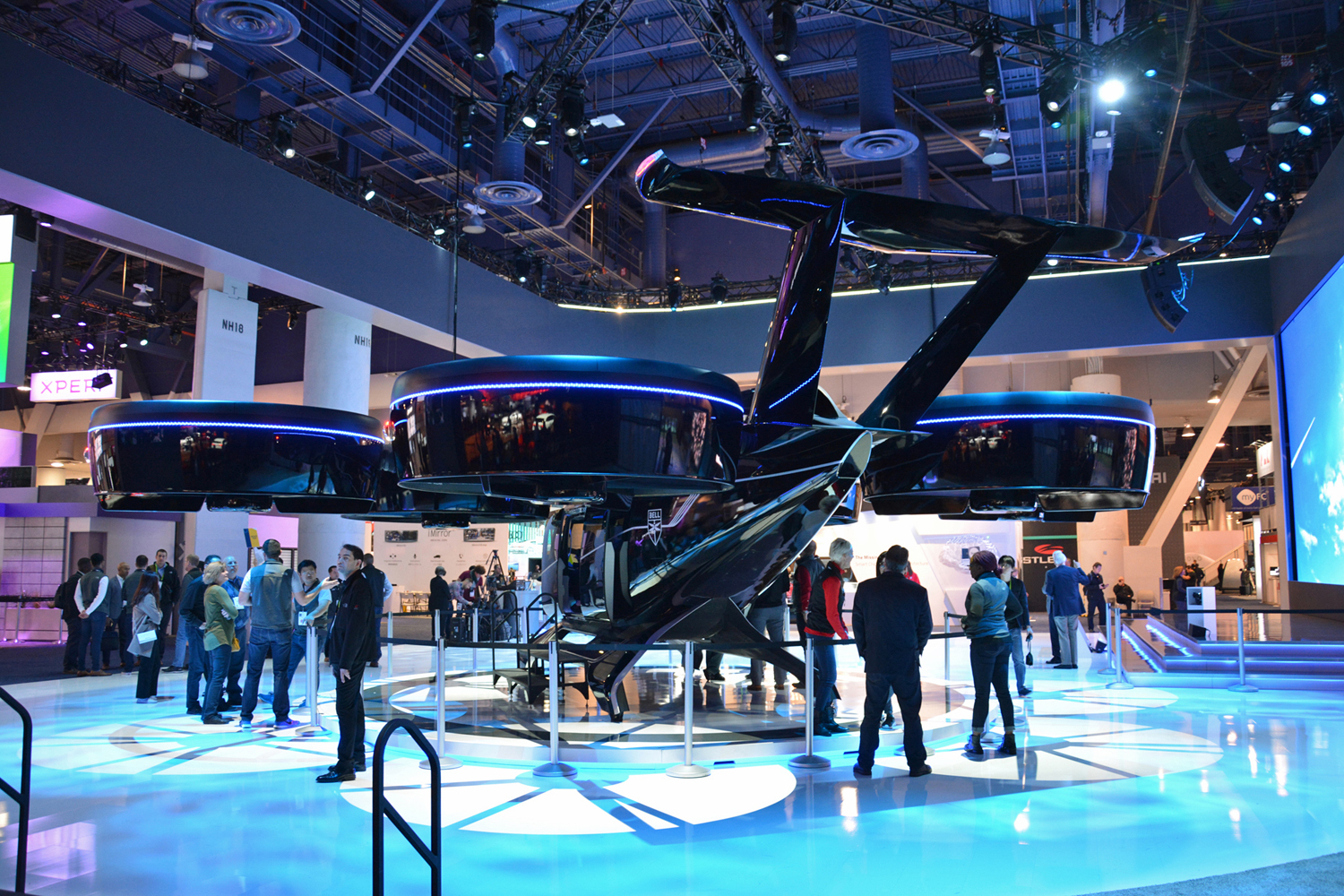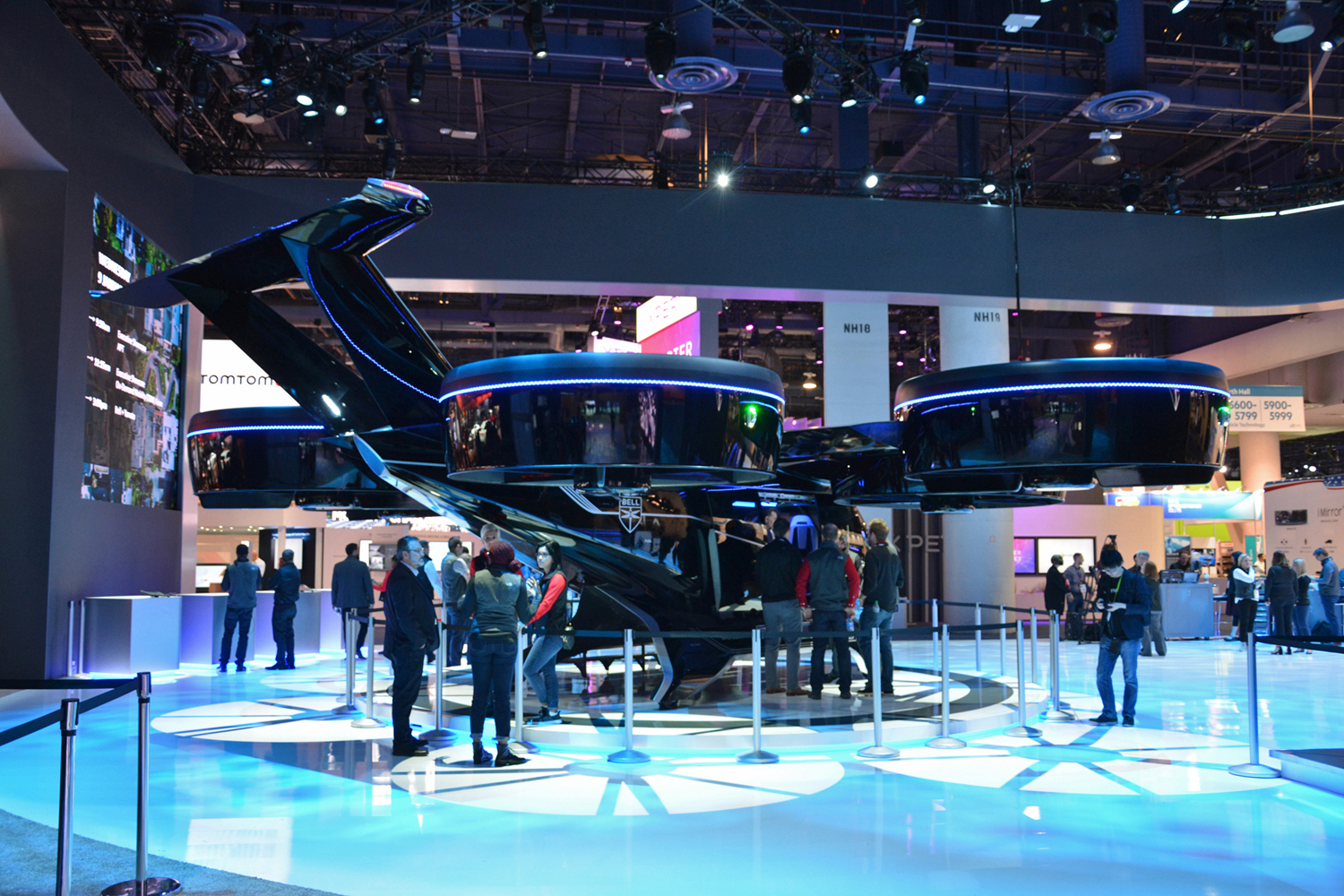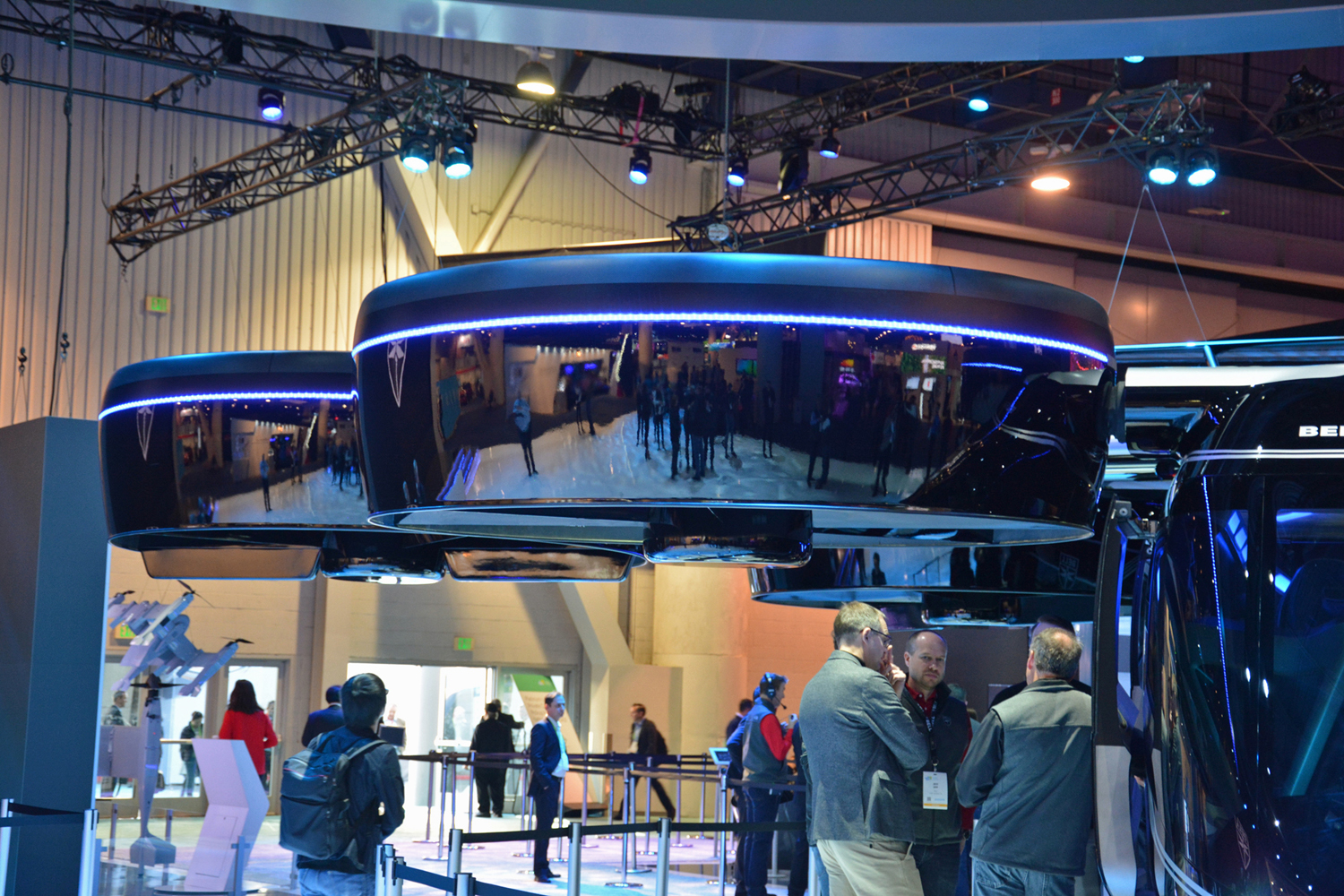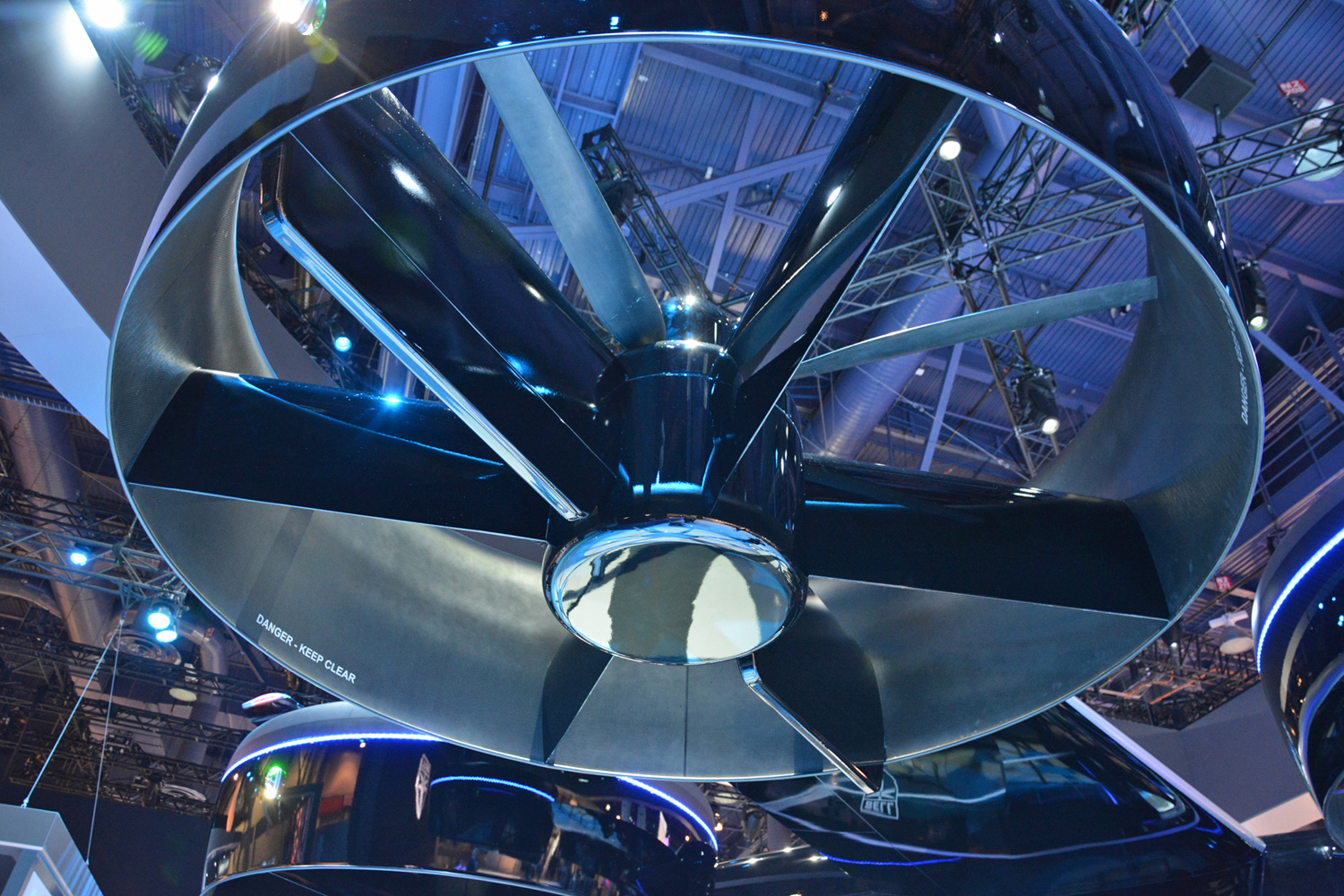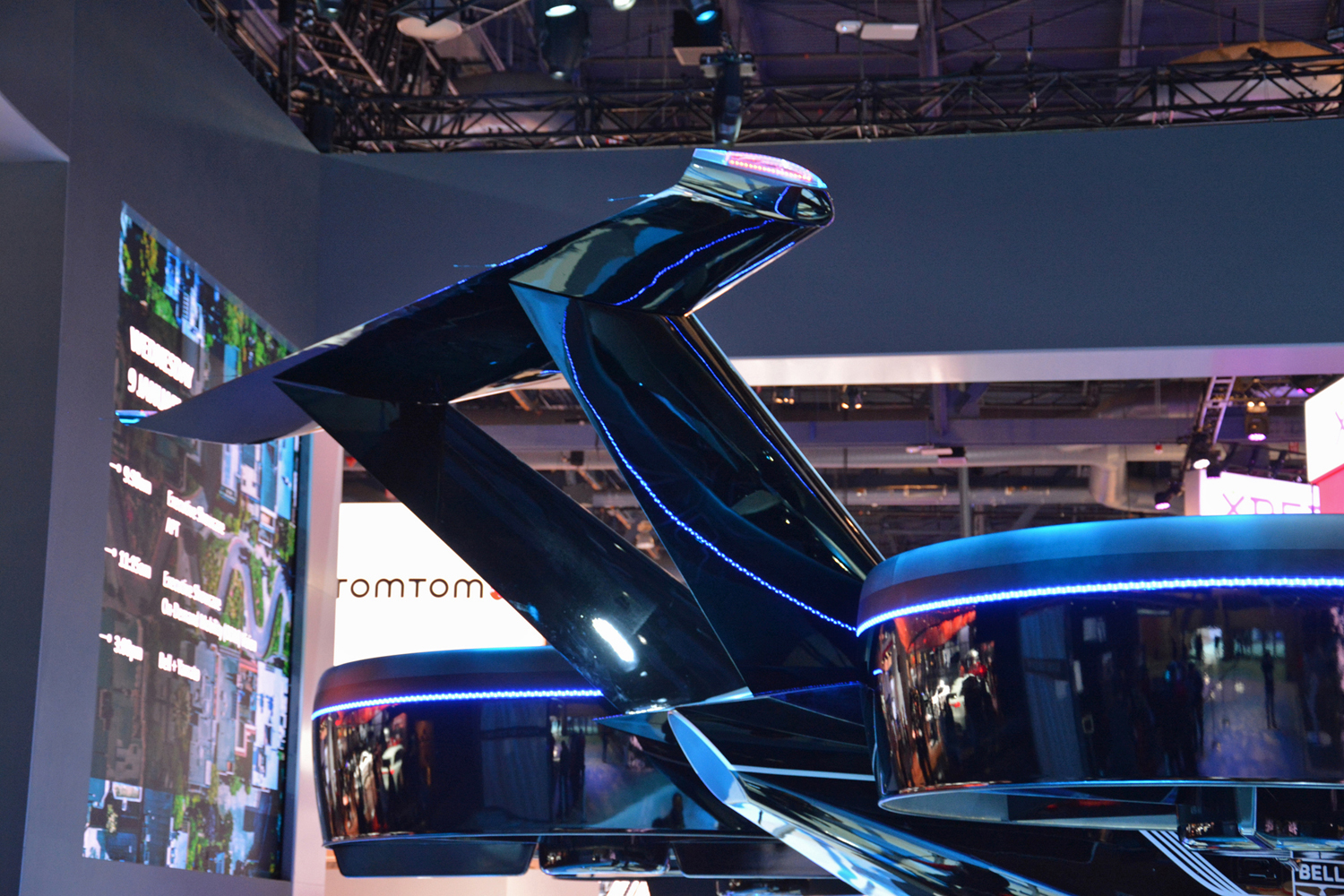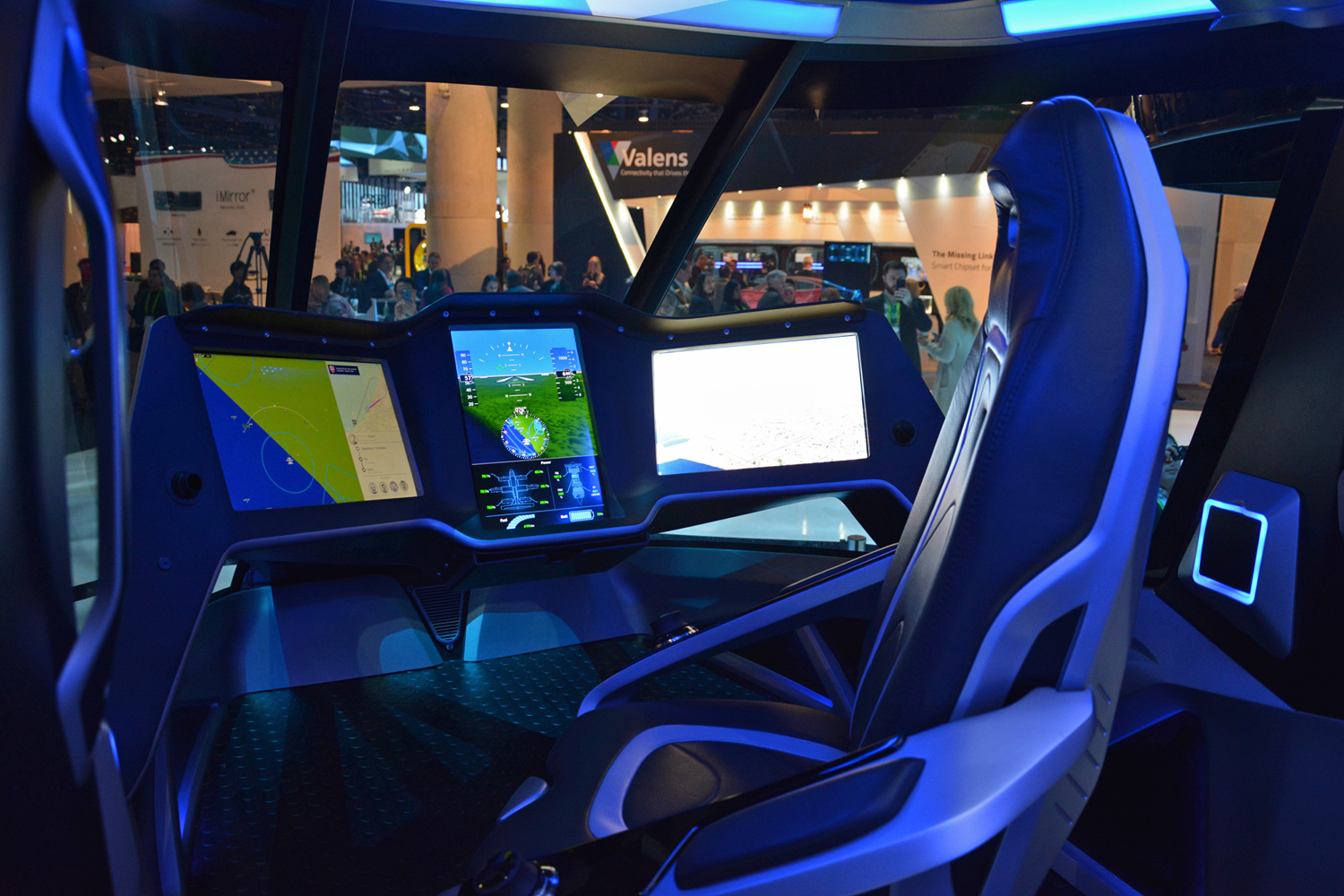There’s a lot of excitement around self-driving cars at CES 2019, but Bell, one of the oldest and most innovative companies in the aviation sector for the past century or so, is skipping a step and going straight to that Jetsons-era staple: the flying car. Specifically, the company is unveiled a full-scale configuration and design of a vertical-takeoff-and-landing (VTOL) air taxi today at CES 2019 in Las Vegas.
More CES 2019 coverage
- This futuristic autonomous pod hotel drives you around as you sleep
- AirSelfie makes a course correction at CES 2019 with 3 new selfie drones
- Sphero’s Specdrums let you drum up a symphony of sound with colors
The air taxi, which totally gives off a Blade Runner spinner vibe, is called Bell Nexus and it’s powered by a hybrid-electric propulsion system that features Bell’s signature powered lift concept, incorporating six tilting ducted fans that are designed to safely redesign air travel. Bell has brought the Nexus concept to CES previously but this year Bell seems to be offering more specifics on engineering and design than previously reported.
“As space at the ground level becomes limited, we must solve transportation challenges in the vertical dimension — and that’s where Bell’s on-demand mobility vision takes hold,” said Mitch Snyder, president and CEO of Bell in a release. “The industry has anticipated the reveal of our air taxi for some time, so Bell is very proud of this moment. We believe the design, taken with our strategic approach to build this infrastructure, will lead to the successful development of the Bell Nexus to the world.”
Bell has a long and storied history, including the manufacture of fighter aircraft during WWII and famously the Bell X-1, the first supersonic aircraft but for the past fifty years under the umbrella of Textron, it’s been most famous for building civilian and military helicopters. The company’s knowledge and expertise of non-wing-assisted flight would certainly be a benefit to developing and manufacturing VTOL aircraft.
The Bell Nexus is the product of a diverse collaboration between a number of aviation and engineering firms including Bell, Safran, EPS, Thales, Moog and Garmin. Garmin, most famous for its glass cockpits, likely contributed to one of Bell’s showcase demonstrations at CES 2019: the Future Flight Controls simulator, which points towards Bell’s plans for the future flight controls of aviation.
Alongside the debut of Bell Nexus, the company also revealed plans for a new potential product called the Autonomous Pod Transport (APT), which brings Bell into a new industry with payload transportation.
CES attendees can check out Bell’s futuristic flying taxi and other innovations at the Bell booth at the Las Vegas Convention Center, North Hall, Booth 5431.
Editors' Recommendations
- Cruise’s robot taxis head to Arizona and Texas
- How a big blue van from 1986 paved the way for self-driving cars
- Waymo’s self-driving cars can’t get enough of one dead-end street
- Tesla issues stark warning to drivers using its Full Self-Driving mode
- The future of mobility: 5 transportation technologies to watch out for
